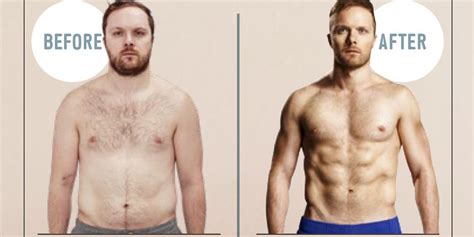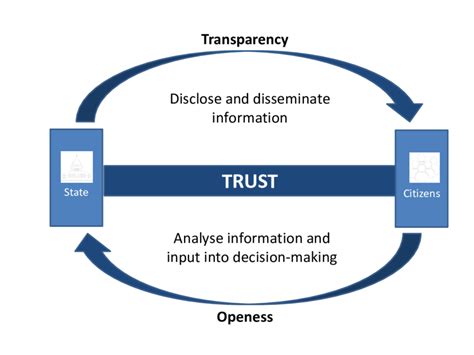
A busy emergency room doctor has transformed his health, shedding nearly half his body fat in just three months through simple, sustainable lifestyle adjustments centered around diet, exercise, and sleep, demonstrating a practical approach to weight loss amidst a demanding schedule.
Dr. Ian Smith, an emergency room physician known for his demanding work hours and unpredictable schedule, has achieved a remarkable health transformation by reducing his body fat from 46% to 27% in a mere three months. This dramatic change, achieved without resorting to extreme diets or unsustainable workout routines, highlights the potential for individuals, even those with intensely busy lives, to significantly improve their health through strategic lifestyle modifications. Smith’s approach focuses on incorporating small, manageable changes into his daily routine, proving that consistency and mindful choices can yield significant results. His journey underscores the importance of prioritizing health and well-being, even amidst the pressures of a high-stress profession. Smith openly shares his strategies to motivate and inspire others to take control of their health.
The Catalyst for Change
Dr. Smith’s decision to embark on this health journey stemmed from a growing awareness of his deteriorating physical condition. The demanding nature of his work, coupled with the stresses of daily life, had taken a toll on his body. He realized that his current lifestyle was unsustainable and that he needed to make significant changes to ensure his long-term health and well-being. “I was tired of being tired,” Dr. Smith admitted. “I knew I needed to make a change, not just for myself, but for my family and my patients.” The realization that his health was impacting his ability to perform his duties as a physician further solidified his commitment to transforming his lifestyle. He understood that leading by example was crucial, and that his own health journey could serve as an inspiration to others struggling with similar challenges.
The Three Pillars of Transformation
Dr. Smith’s transformation strategy centered around three key pillars: diet, exercise, and sleep. Recognizing that a holistic approach was essential for sustainable results, he meticulously crafted a plan that addressed each of these areas.
-
Diet: Smith’s dietary changes were not about deprivation or restrictive dieting. Instead, he focused on making mindful choices that prioritized nutrient-dense foods. He emphasized portion control, mindful eating, and incorporating more fruits, vegetables, and lean proteins into his diet. “I didn’t eliminate any food groups,” Smith explained. “Instead, I focused on making healthier choices within each food group and being mindful of my portion sizes.” He also emphasized the importance of planning meals in advance to avoid unhealthy impulse decisions, which often arise from hunger and convenience during his long shifts. A key component was reducing processed foods and added sugars, replacing them with whole, unprocessed alternatives. Hydration also played a crucial role, with Dr. Smith prioritizing water intake throughout the day.
-
Exercise: Recognizing the limitations of his busy schedule, Dr. Smith incorporated short, high-intensity workouts into his routine. He focused on exercises that could be performed quickly and efficiently, such as HIIT (High-Intensity Interval Training) and bodyweight exercises. “I didn’t have time to spend hours in the gym,” Smith said. “So, I found ways to incorporate exercise into my day, even if it was just for 15-20 minutes at a time.” He also made a conscious effort to increase his daily activity levels by taking the stairs instead of the elevator, walking during breaks, and finding opportunities to move throughout the day. He integrated both cardio and strength training exercises to maximize fat loss and build muscle mass.
-
Sleep: Dr. Smith recognized the crucial role that sleep plays in overall health and well-being. Despite the challenges of his unpredictable work schedule, he made a concerted effort to prioritize sleep hygiene. He established a regular sleep schedule, created a relaxing bedtime routine, and optimized his sleep environment to promote restful sleep. “Sleep is often the first thing that people sacrifice when they’re busy,” Smith noted. “But it’s essential for weight loss, muscle recovery, and overall health.” He implemented strategies such as avoiding caffeine and alcohol before bed, creating a dark and quiet sleep environment, and practicing relaxation techniques to improve the quality of his sleep.
Specific Strategies Employed
Delving deeper into Dr. Smith’s strategies reveals a practical and realistic approach that can be adapted by anyone seeking to improve their health.
-
Meal Prepping: Smith dedicated time each week to meal prepping, preparing healthy and balanced meals in advance to avoid unhealthy fast-food options or impulsive snacking during his long shifts. This allowed him to control portion sizes and ensure that he was consuming nutrient-dense foods throughout the day. He focused on preparing meals that were easy to transport and reheat, making it convenient to maintain a healthy diet even when he was away from home.
-
HIIT Workouts: Dr. Smith incorporated HIIT workouts into his routine, which involve short bursts of intense exercise followed by brief recovery periods. These workouts are highly effective for burning calories and improving cardiovascular health in a short amount of time. He utilized online resources and fitness apps to guide his workouts, ensuring that he was performing the exercises correctly and safely. He alternated between different types of HIIT workouts to keep things interesting and prevent plateaus.
-
Mindful Eating: Dr. Smith practiced mindful eating, paying attention to his hunger cues and eating slowly and deliberately. This helped him to avoid overeating and to savor the flavors of his food. He also made a conscious effort to eliminate distractions while eating, such as watching television or using his phone, to focus on the experience of eating. He found that mindful eating helped him to feel more satisfied with his meals and to make healthier food choices.
-
Sleep Hygiene: Dr. Smith implemented a comprehensive sleep hygiene routine to improve the quality of his sleep. This included establishing a regular sleep schedule, creating a dark and quiet sleep environment, avoiding caffeine and alcohol before bed, and practicing relaxation techniques such as meditation or deep breathing exercises. He also made sure to get exposure to natural light during the day to regulate his circadian rhythm.
-
Hydration Strategies: Dr. Smith made a conscious effort to drink plenty of water throughout the day. He carried a water bottle with him at all times and refilled it regularly. He also incorporated hydrating foods into his diet, such as fruits and vegetables with high water content. He found that staying hydrated helped him to feel more energized and alert, and also helped to control his appetite.
The Psychological Component
Beyond diet, exercise, and sleep, Dr. Smith emphasized the importance of addressing the psychological aspects of weight loss. He recognized that emotional eating and stress could undermine even the best-laid plans. To combat these challenges, he incorporated mindfulness techniques and stress-reduction strategies into his routine.
-
Mindfulness: Dr. Smith practiced mindfulness to become more aware of his thoughts, feelings, and sensations. This helped him to identify triggers for emotional eating and to develop healthier coping mechanisms for stress. He used meditation and deep breathing exercises to cultivate a sense of calm and to reduce anxiety. He also focused on appreciating the present moment and finding joy in everyday activities.
-
Stress Management: Dr. Smith implemented various stress management techniques to cope with the demands of his job and personal life. He made time for activities that he enjoyed, such as reading, listening to music, and spending time with loved ones. He also practiced yoga and other forms of exercise to reduce stress and improve his overall well-being. He understood that managing stress was crucial for maintaining a healthy lifestyle and preventing relapse.
The Importance of Consistency and Sustainability
Dr. Smith’s success underscores the importance of consistency and sustainability in any health transformation journey. He did not rely on quick fixes or fad diets. Instead, he focused on making small, sustainable changes that he could maintain over the long term.
-
Small Changes: Dr. Smith emphasized the power of small changes. He started by making one or two small adjustments to his diet, exercise, or sleep routine each week. As he became more comfortable with these changes, he gradually added more. This approach made the transformation process less overwhelming and more manageable.
-
Sustainability: Dr. Smith prioritized sustainability in his approach. He understood that any changes he made needed to be realistic and achievable in the context of his busy lifestyle. He avoided restrictive diets or unsustainable workout routines that he knew he wouldn’t be able to maintain in the long run. Instead, he focused on creating a lifestyle that supported his health goals.
Inspiring Others
Dr. Smith’s journey has inspired countless individuals to take control of their health and well-being. He shares his story and strategies openly, providing practical advice and motivation to others who are struggling with weight loss or other health challenges.
-
Sharing His Story: Dr. Smith shares his story through social media, interviews, and public speaking engagements. He is honest and relatable, sharing both his successes and his struggles. He emphasizes that anyone can achieve their health goals with the right mindset and approach.
-
Providing Practical Advice: Dr. Smith provides practical advice on diet, exercise, and sleep, drawing from his own experiences and his medical knowledge. He offers tips and strategies that are easy to implement and sustainable over the long term. He also emphasizes the importance of seeking professional guidance from a doctor or other healthcare provider.
-
Motivation: Dr. Smith’s story is a powerful source of motivation for others. He demonstrates that even busy professionals can achieve significant health transformations with dedication and consistency. He inspires others to believe in themselves and to take the first step towards a healthier lifestyle.
Potential Benefits of Dr. Smith’s Approach
Dr. Smith’s weight loss and lifestyle changes had the following impact:
- Improved cardiovascular health because weight loss is generally associated with lower blood pressure, reduced cholesterol levels, and improved heart function, all of which reduce the risk of heart disease.
- Increased energy levels because weight loss and improved diet can combat fatigue and enhance energy levels.
- Better sleep quality because weight management can reduce the risk of sleep apnea and improve overall sleep quality.
- Enhanced mood and mental health because physical activity and a healthier diet can boost mood, reduce anxiety, and improve mental clarity.
- Reduced risk of chronic diseases because weight loss is known to lower the risk of type 2 diabetes, certain cancers, and joint problems.
- Greater confidence and self-esteem because achieving health goals and improving physical appearance can significantly boost self-esteem and overall well-being.
- Improved physical performance because losing weight can improve mobility, reduce strain on joints, and enhance physical endurance.
- Better metabolic health because weight loss can improve insulin sensitivity and metabolic function.
Expert Opinions
While Dr. Smith’s transformation is inspiring, experts emphasize the importance of individualizing health plans and consulting with healthcare professionals. Registered dietitian, Sarah Jones, states, “Dr. Smith’s success is commendable, but it’s crucial to remember that what works for one person may not work for another. Individual factors such as genetics, medical history, and lifestyle should be considered.” Similarly, certified personal trainer, Mark Thompson, adds, “While HIIT workouts can be effective, it’s important to ensure proper form and technique to avoid injuries. Consulting with a qualified trainer is recommended, especially for beginners.” Doctors also highlight the necessity of medical check-ups. Dr. Emily Carter, a primary care physician, notes, “Before starting any major weight loss program, it’s essential to consult with your doctor to rule out any underlying medical conditions and to ensure that the program is safe and appropriate for you.”
Conclusion
Dr. Ian Smith’s remarkable transformation serves as a powerful reminder that sustainable health improvements are achievable even amidst the constraints of a demanding lifestyle. By prioritizing diet, exercise, and sleep, and by making small, consistent changes, individuals can significantly improve their health and well-being. While his story is inspiring, experts emphasize the importance of individualizing health plans and consulting with healthcare professionals to ensure safety and effectiveness. Dr. Smith’s journey is not just about weight loss, but about adopting a healthier and more sustainable lifestyle that can lead to long-term benefits. His commitment to sharing his experiences and providing practical advice makes him a valuable resource for anyone seeking to improve their health and well-being. He exemplifies the power of mindful choices and consistency in achieving lasting results. His experience demonstrates that prioritizing health is possible, and that small, manageable changes can lead to profound transformations. The key takeaway from Dr. Smith’s journey is that health is an ongoing process, not a destination, and that consistent effort and a commitment to well-being can yield significant rewards.
Frequently Asked Questions (FAQ)
1. What were the key changes Dr. Smith made to his diet to lose weight?
Dr. Smith primarily focused on making mindful and sustainable dietary changes rather than following a restrictive diet. Key changes included:
- Prioritizing Nutrient-Dense Foods: He increased his intake of fruits, vegetables, and lean proteins.
- Portion Control: He became more mindful of his portion sizes to avoid overeating.
- Reducing Processed Foods and Added Sugars: He minimized the consumption of processed foods and sugars, opting for whole, unprocessed alternatives.
- Meal Prepping: He prepared meals in advance to ensure healthy choices during his busy work schedule.
- Hydration: He focused on drinking enough water throughout the day.
Dr. Smith did not eliminate any food groups but rather focused on healthier choices within each group.
2. What type of exercise did Dr. Smith incorporate into his routine, given his busy schedule?
Dr. Smith mainly incorporated short, high-intensity workouts that could be done quickly and efficiently into his daily routine. His primary exercise methods included:
- High-Intensity Interval Training (HIIT): He utilized HIIT workouts to burn calories and improve cardiovascular health in a short amount of time. These workouts involve short bursts of intense exercise followed by brief recovery periods.
- Bodyweight Exercises: He incorporated bodyweight exercises that could be performed without equipment, making it convenient to exercise anywhere, anytime.
- Increased Daily Activity: He increased his daily activity levels by taking the stairs instead of the elevator, walking during breaks, and finding opportunities to move throughout the day.
- Combined Cardio and Strength Training: He integrated both cardio and strength training exercises to maximize fat loss and build muscle mass.
These exercises allowed him to maximize his fitness efforts within the constraints of his busy schedule.
3. How did Dr. Smith manage to prioritize sleep with his demanding and unpredictable work hours?
Dr. Smith recognized the critical role of sleep and made a conscious effort to prioritize sleep hygiene despite his demanding and unpredictable work hours. His strategies included:
- Establishing a Regular Sleep Schedule: He attempted to maintain a consistent sleep schedule, even on days off, to regulate his body’s natural sleep-wake cycle.
- Creating a Relaxing Bedtime Routine: He implemented a calming bedtime routine to prepare his body for sleep. This included activities such as reading, taking a warm bath, or practicing relaxation techniques.
- Optimizing Sleep Environment: He ensured his sleep environment was dark, quiet, and cool to promote restful sleep.
- Avoiding Caffeine and Alcohol Before Bed: He avoided consuming caffeine and alcohol close to bedtime, as these substances can interfere with sleep quality.
- Implementing Relaxation Techniques: He practiced relaxation techniques such as meditation and deep breathing exercises to reduce stress and improve sleep.
- Exposure to Natural Light: He made sure to get exposure to natural light during the day to regulate his circadian rhythm.
By implementing these strategies, Dr. Smith improved the quality and duration of his sleep, which played a crucial role in his overall health transformation.
4. What psychological strategies did Dr. Smith use to support his weight loss and health transformation?
Dr. Smith recognized the importance of addressing the psychological aspects of weight loss and incorporated several strategies to support his transformation. These included:
- Mindfulness: He practiced mindfulness to become more aware of his thoughts, feelings, and sensations. This helped him to identify triggers for emotional eating and develop healthier coping mechanisms for stress.
- Stress Management: He implemented various stress management techniques to cope with the demands of his job and personal life. These included making time for activities he enjoyed, practicing yoga, and utilizing relaxation exercises.
- Emotional Eating Awareness: He paid attention to his emotional state to prevent emotional eating. When feeling stressed or upset, he chose alternative activities like walking or talking to a friend instead of turning to food.
- Positive Self-Talk: He practiced positive self-talk and affirmations to maintain a positive mindset and stay motivated throughout his journey.
- Goal Setting: He set realistic and achievable goals to maintain motivation and track his progress. Breaking larger goals into smaller, manageable steps helped him stay focused and avoid feeling overwhelmed.
- Seeking Support: Although not explicitly stated, seeking support from friends, family, or a therapist can provide additional emotional support and accountability.
By addressing the psychological components, Dr. Smith was better equipped to manage cravings, stress, and emotional eating, making his transformation more sustainable.
5. What advice do experts offer regarding Dr. Smith’s approach, and how can individuals ensure they implement it safely?
Experts emphasize that Dr. Smith’s success is inspiring but that individuals should consider their unique circumstances and consult healthcare professionals before implementing similar changes. Key advice includes:
- Individualization: What works for one person may not work for another. Individual factors such as genetics, medical history, and lifestyle should be considered.
- Professional Consultation: Consulting with a doctor, registered dietitian, or certified personal trainer is recommended before starting any major weight loss or exercise program. This ensures that the program is safe, appropriate, and tailored to individual needs.
- Medical Check-up: A medical check-up is essential to rule out any underlying medical conditions and to ensure that the program is safe and appropriate.
- Proper Form and Technique: When incorporating HIIT workouts or other exercises, it’s important to ensure proper form and technique to avoid injuries. Consulting with a qualified trainer is recommended, especially for beginners.
- Gradual Changes: Start with small, gradual changes rather than making drastic changes all at once. This makes the transformation process more manageable and sustainable.
- Realistic Expectations: Set realistic and achievable goals to avoid discouragement.
- Sustainability: Focus on creating a lifestyle that supports long-term health and well-being, rather than relying on quick fixes or fad diets.
By following this advice, individuals can implement Dr. Smith’s approach safely and effectively, maximizing their chances of achieving sustainable health improvements.









